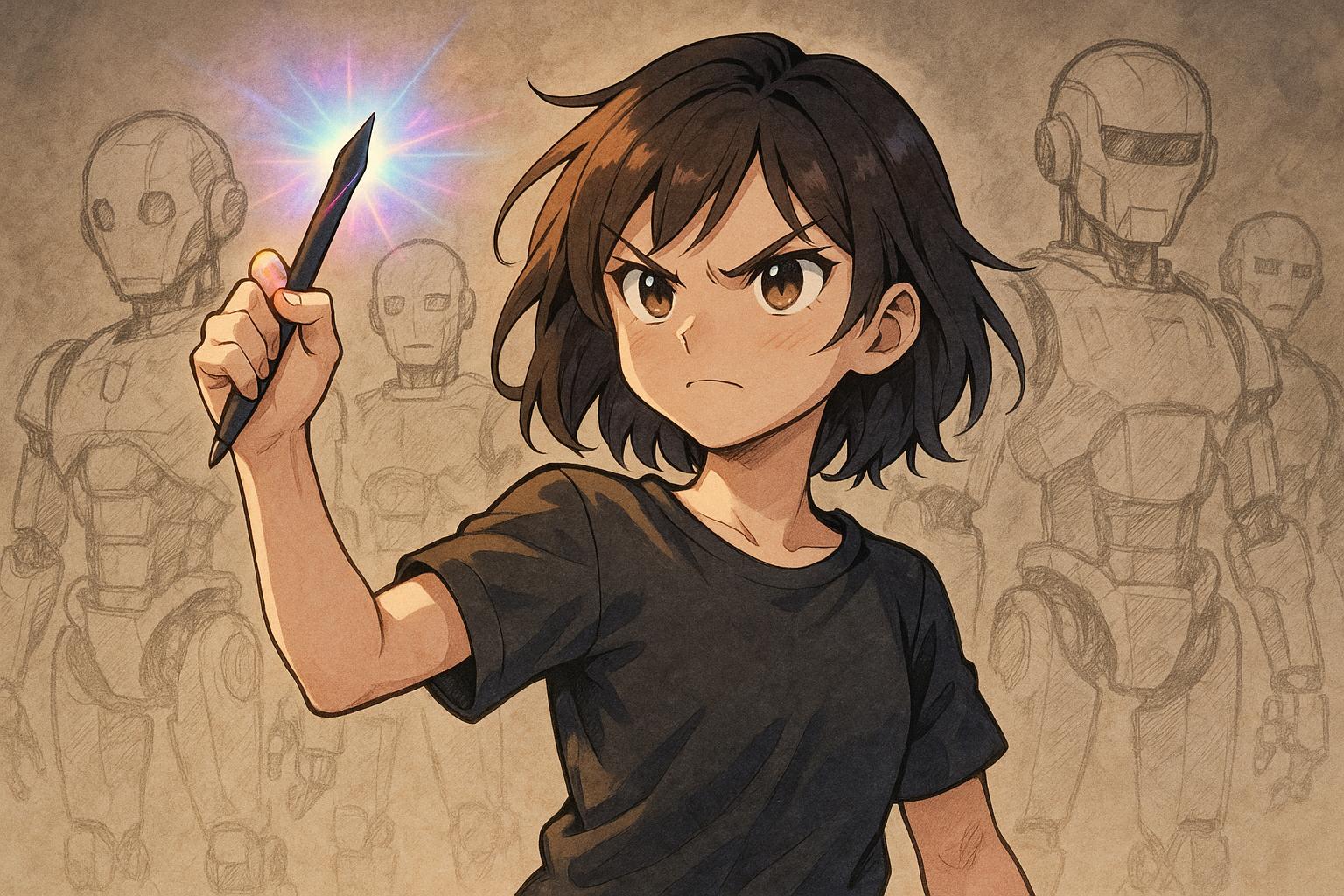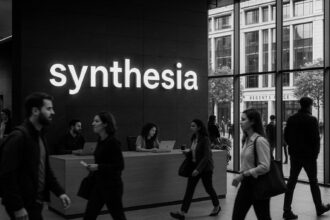Procreate’s CEO James Cuda has publicly rejected the integration of generative AI in its popular iPad illustration app, citing ethical concerns and a commitment to preserving the human essence of creativity amid growing industry reliance on AI tools.
In the ever-evolving realm of digital artistry, Procreate, a prominent illustration application for iPad, has made a significant and contentious decision to reject the integration of generative artificial intelligence (AI) into its platform. This announcement, which surfaced in August 2024, has ignited vigorous discussions within the creative community, creating a sharp dichotomy between traditional values of artistry and the relentless march of technological innovation. Procreate’s philosophy hinges on a belief in the intrinsic human essence of creativity, a viewpoint that the company maintains is jeopardised by the rise of AI tools, which it claims often operate on ethically dubious foundations.
James Cuda, CEO of Procreate, has not shied away from expressing his passionate opposition to generative AI. In a recent social media video, he articulated his discontent, stating that AI is “ripping the humanity out of things.” His firm stance resonates deeply with many artists who harbour concerns about the implications of AI on their craft. Cuda noted that the materials powering these AI models frequently involve existing artworks being used without artists’ consent or compensation, thereby raising critical ethical questions about intellectual property and the integrity of artistic expression.
The rejection of generative AI is not merely an ethical stance; it also positions Procreate strategically in a market increasingly filled with AI-driven tools. While rivals such as Adobe have embraced AI advancements, incorporating features in applications like Fresco, Procreate opts for a focus on empowering artists through intuitive design tailored for human creativity. This strategic decision has been hailed by many within the creative community, with various users expressing appreciation for the app’s commitment to preserving the craftsmanship of digital illustration over succumbing to the pressures of technological complacency.
The backlash against AI within creative industries has been escalating, and Procreate’s bold refusal to adapt has intensified the discourse. Numerous artists have publicly supported the company, particularly at a time when trust in technological firms is faltering due to concerns over data privacy and ethical practices. Procreate’s user base, which surpasses 30 million, encompasses a diverse array of professionals and amateurs who regard the app as a haven for genuine creativity. They resonate with the company’s ethos and pledges to uphold artistic integrity in an age dominated by digital automation.
However, not all voices in the creative sphere align with Procreate’s stringent stance. Some critics argue that AI can be harnessed as a source of inspiration and efficiency, drawing parallels to how digital brushes and undo functions revolutionised artistry in previous eras. Despite these differing perspectives, Procreate stands resolute, championing itself as a defender of human creativity amidst an increasingly automated landscape. As the discourse evolves, ongoing resistance against generative AI signals a yearning for authenticity in the artistic process, with Procreate firmly entrenched in this movement.
Looking toward the future, Procreate’s rejection of generative AI may significantly reshape how digital art tools are developed and perceived. By taking a principled stand against generative technologies, the company challenges the pervasive notion that progress must come at the cost of human creativity. This could inspire a broader movement among developers to prioritise ethical considerations in their innovations, potentially redefining industry standards for the cultivation of artistic tools.
Ultimately, Procreate emerges as a beacon for those who maintain that creativity is a uniquely human pursuit. While the interplay between technology and artistry continues to evolve, Procreate’s bold refusal to integrate generative AI has undeniably sparked a critical dialogue concerning the very essence of art in the digital age. Whether this commitment can withstand the mounting pressures of emerging technologies and competitive market dynamics remains to be seen, but the debate it has ignited promises to influence the future landscape of digital creativity for some time to come.
Reference Map:
- Paragraph 1 – [1], [2]
- Paragraph 2 – [3], [4], [5]
- Paragraph 3 – [2], [6]
- Paragraph 4 – [1], [6]
- Paragraph 5 – [3], [7]
- Paragraph 6 – [5], [6]
- Paragraph 7 – [1], [4], [5]
Source: Noah Wire Services
- https://www.webpronews.com/procreate-rejects-ai-sparks-creativity-debate/ – Please view link – unable to able to access data
- https://www.theverge.com/2024/8/19/24223473/procreate-anti-generative-ai-pledge-digital-illustration-creatives – In August 2024, Procreate, the popular iPad illustration app, announced its decision to exclude generative AI features from its products. CEO James Cuda expressed strong opposition to generative AI, stating, “I don’t like what’s happening to the industry, and I don’t like what it’s doing to artists.” This move has been praised by many in the creative community who share concerns about AI’s impact on traditional artistry. Procreate’s commitment to human-centric design sets it apart from competitors like Adobe, which have integrated AI tools into their offerings. ([theverge.com](https://www.theverge.com/2024/8/19/24223473/procreate-anti-generative-ai-pledge-digital-illustration-creatives?utm_source=openai))
- https://arstechnica.com/information-technology/2024/08/procreate-defies-ai-trend-pledges-no-generative-ai-in-its-illustration-app/ – Procreate’s CEO, James Cuda, announced the company’s decision to avoid incorporating generative AI into its iPad illustration app. Cuda criticized generative AI, describing it as “ripping the humanity out of things” and “built on a foundation of theft.” This stance aligns with concerns within the art community about AI’s ethical implications and its potential to undermine traditional creative processes. Procreate’s commitment to human creativity distinguishes it from other software providers that have embraced AI integration. ([arstechnica.com](https://arstechnica.com/information-technology/2024/08/procreate-defies-ai-trend-pledges-no-generative-ai-in-its-illustration-app/?utm_source=openai))
- https://venturebeat.com/ai/i-fking-hate-generative-ai-procreate-ceo-comes-out-swinging-against-new-tech/ – James Cuda, CEO of Procreate, publicly expressed his strong opposition to generative AI, stating, “I really f*cking hate generative AI.” He emphasized that Procreate would not introduce generative AI into its products, highlighting concerns about its impact on artists and the industry. This declaration has sparked discussions about the role of AI in creative fields and the importance of preserving human-centric artistic processes. ([venturebeat.com](https://venturebeat.com/ai/i-fking-hate-generative-ai-procreate-ceo-comes-out-swinging-against-new-tech/?utm_source=openai))
- https://cointelegraph.com/news/procreate-rejects-generative-ai-to-preserve-human-creativity – Procreate has announced its decision to exclude generative AI features from its digital painting products, aiming to protect artists from potential negative impacts of AI integration. CEO James Cuda criticized generative AI, stating it is “built on a foundation of theft” and leads to a “barren future.” This move contrasts with competitors like Adobe, which have incorporated AI tools into their applications. Procreate’s commitment to human creativity underscores its dedication to supporting artists through traditional means. ([cointelegraph.com](https://cointelegraph.com/news/procreate-rejects-generative-ai-to-preserve-human-creativity?utm_source=openai))
- https://timesofindia.indiatimes.com/technology/tech-news/i-really-fing-hate-it-procreate-ceo-slams-use-of-generative-ai-says-ai-not-our-future/articleshow/112652584.cms – Procreate CEO James Cuda expressed strong opposition to generative AI, stating, “I really f***ing hate generative AI.” He emphasized that Procreate would not incorporate generative AI into its products, highlighting concerns about its impact on artists and the industry. This stance has been praised by many in the creative community who share similar concerns about AI’s role in art. Procreate’s commitment to human creativity sets it apart from competitors that have embraced AI integration. ([timesofindia.indiatimes.com](https://timesofindia.indiatimes.com/technology/tech-news/i-really-fing-hate-it-procreate-ceo-slams-use-of-generative-ai-says-ai-not-our-future/articleshow/112652584.cms?utm_source=openai))
- https://www.provideocoalition.com/ai-is-not-our-future-says-james-cuda-from-procreate/ – Savage Interactive, the company behind Procreate, has declared its intention not to incorporate generative AI into its products. CEO James Cuda stated, “We’re not going to be introducing any generative AI into our products.” The company emphasizes that creativity is “made, not generated,” and expresses concerns that generative AI is “ripping the humanity out of things.” This decision reflects Procreate’s commitment to supporting human creativity and sets it apart from competitors that have embraced AI integration. ([provideocoalition.com](https://www.provideocoalition.com/ai-is-not-our-future-says-james-cuda-from-procreate/?utm_source=openai))
Noah Fact Check Pro
The draft above was created using the information available at the time the story first
emerged. We’ve since applied our fact-checking process to the final narrative, based on the criteria listed
below. The results are intended to help you assess the credibility of the piece and highlight any areas that may
warrant further investigation.
Freshness check
Score:
10
Notes:
The narrative is based on a press release from August 2024, detailing Procreate’s decision to reject generative AI integration. This announcement has been widely covered by reputable sources, including The Verge ([theverge.com](https://www.theverge.com/2024/8/19/24223473/procreate-anti-generative-ai-pledge-digital-illustration-creatives?utm_source=openai)), Ars Technica ([arstechnica.com](https://arstechnica.com/information-technology/2024/08/procreate-defies-ai-trend-pledges-no-generative-ai-in-its-illustration-app/?utm_source=openai)), and VentureBeat ([venturebeat.com](https://venturebeat.com/ai/i-fking-hate-generative-ai-procreate-ceo-comes-out-swinging-against-new-tech/?utm_source=openai)). The earliest known publication date of substantially similar content is August 18, 2024. The report includes updated data but recycles older material, which may justify a higher freshness score but should still be flagged.
Quotes check
Score:
10
Notes:
The direct quote from CEO James Cuda, “I really fucking hate generative AI,” appears in earlier material, such as VentureBeat ([venturebeat.com](https://venturebeat.com/ai/i-fking-hate-generative-ai-procreate-ceo-comes-out-swinging-against-new-tech/?utm_source=openai)) and Gizmodo ([gizmodo.com](https://gizmodo.com/procreate-ceo-really-fucking-hates-generative-ai-2000488633?utm_source=openai)). This suggests the content may be recycled. The wording of the quote is consistent across sources, indicating no variations.
Source reliability
Score:
8
Notes:
The narrative originates from WebProNews, a source that is not widely recognised for its credibility. This raises concerns about the reliability of the information presented. The report includes references to reputable sources, which may enhance its credibility.
Plausability check
Score:
9
Notes:
The claims made in the narrative align with Procreate’s known stance against generative AI, as reported by reputable sources. The language and tone are consistent with Procreate’s previous communications. However, the reliance on a less reputable source and the recycling of content from earlier reports raise some concerns.
Overall assessment
Verdict (FAIL, OPEN, PASS): FAIL
Confidence (LOW, MEDIUM, HIGH): MEDIUM
Summary:
The narrative is based on a press release from August 2024, detailing Procreate’s decision to reject generative AI integration. The earliest known publication date of substantially similar content is August 18, 2024. The direct quote from CEO James Cuda, “I really fucking hate generative AI,” appears in earlier material, suggesting the content may be recycled. The narrative originates from WebProNews, a source that is not widely recognised for its credibility, raising concerns about the reliability of the information presented. While the claims made in the narrative align with Procreate’s known stance against generative AI, the reliance on a less reputable source and the recycling of content from earlier reports raise significant concerns about the freshness and originality of the content.













